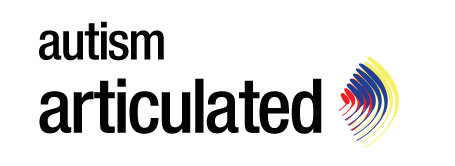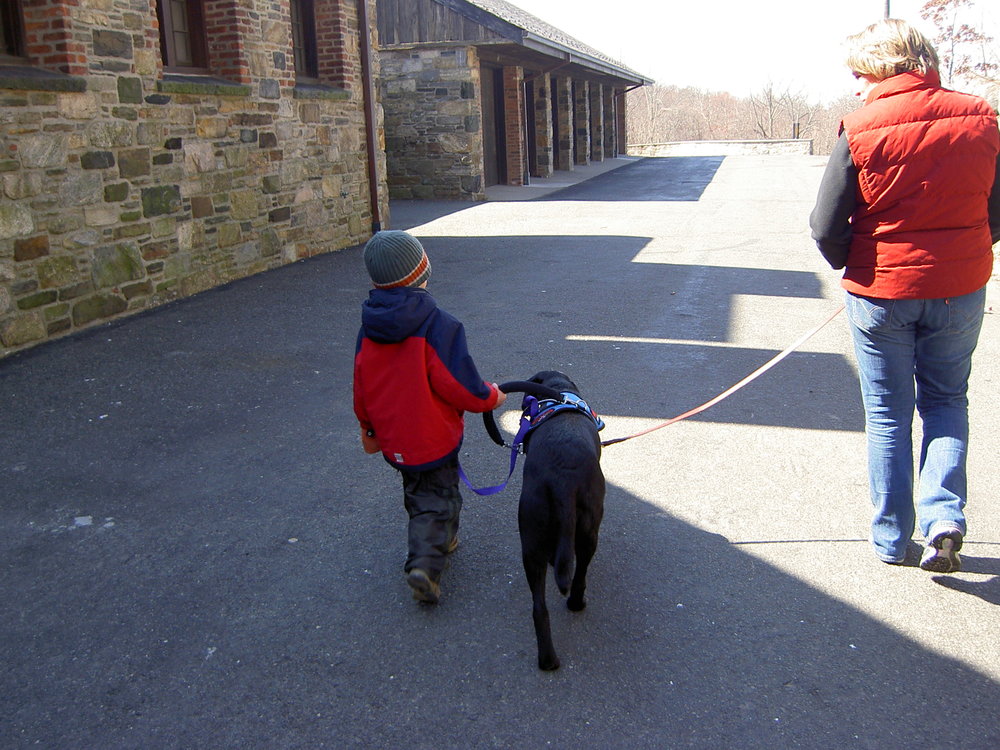Meet Dr. Jody Sandler
/Dr. Jody Sandler is a veterinarian who created BluePath Service Dogs to provide service dogs to children who are on the autism spectrum. Learn how Dr. Sandler's long-held passion for animals led to an award-winning career and an incredible contribution to the autism community.
Tell us about yourself.
I was raised in Yonkers, New York. Neither of my parents went to college. My father worked for many years in a family wholesale fruit business across from Yankee Stadium, and then worked for 25 years as a salesman (when they used to have salesmen!) in a local Sears department store. My mother was a bookkeeper for a nursing home.
As a child, I grew up working in my Aunt and Uncle’s flower shop in Bronxville, New York, and some of my favorite memories are of working there at Christmas time, in rooms each filled with over 100 beautiful red Poinsettias. I can remember making beautiful wreaths for customers as early as 12 years of age and going out as a “jumper” on deliveries. A jumper would ride in the passenger seat and when the driver pulled up to the delivery address, you would jump out with the plant or arrangement and run up to the door to deliver it, which saved a lot of time in not having to park the vehicle.
I attended high school in Yorktown Heights, NY and then went to college at the State University of New York at Binghamton, where two college friends and I ran a small theater company which is still in existence 35 years later.
I am married and have four children, one of whom is now a veterinarian herself. My oldest son is getting his PhD in engineering from Virginia Tech, and my youngest two sons are in high school and junior high school. I have three dogs, four cats and two horses.
You were recently named the American Veterinary Medical Association's 2016 Bustad Companion Animal Veterinarian of the Year. What was your journey to becoming a veterinarian?
Great question! As most veterinarians, I was always drawn to animals. My family lived in a small apartment and animals were not allowed, so I had to get me “fix” of animals at my Aunt and Uncle’s house, where there were dogs, cats, ducks and pigeons in the middle of a mixed city/suburban environment.
In high school, I joined a weather club. There was a fully functional weather station in the school, and the students would use all of the current maps (this was before computers!) to make a forecast, and then we would call the forecast in to a local AM radio station and record it to be played over the air every morning. It was then that I thought I might end up becoming a meteorologist!
Then, the turning point happened. My mother was driving me to a doctor’s appointment in the Bronx (part of New York City) and we saw a car hit a dog that ran into the street. We stopped and my mother was crying not knowing what to do. I looked out the window and saw the dog laying in the street kicking it’s feet and I felt so helpless. The driver and some pedestrians attended to the dog, and we pulled away, but I never forgot that feeling of not being able to help. It was soon after that that I gave up meteorology and decided to be a veterinarian.
I began volunteering at a spay and neuter clinic after school, and then worked as an assistant in a local veterinary hospital for three years. Experience is important when applying to veterinary school. I went away to college, and applied to veterinary school in my senior year, and I was crushed when I did not get in. Veterinary school is very competitive as there are many applicants but few positions.
I decided not to wait another year and instead, applied to a veterinary school in the Philippines. I knew someone who had gone there, so I thought I would go. Well, I spent 5 days there and realized that it was not for me. The condition of the school was poor and there was very little modern equipment. I returned home and went back to college to work on my Masters degree. I mucked stalls to get more large animal “experience”, and reapplied the following year and …...success! I was in!
How did BluePath service dogs come to be?
Another lesson in not giving up!
After graduating from the College of Veterinary Medicine at Cornell University, I worked for two years on Long Island in a small animal practice. It was there that the next turning point occurred. A visually impaired client and her guide dog pulled up to the front door of the practice in a taxi. The dog was coming in because of age related issues and was not working well anymore. As the taxi door opened, the client carefully got out of the taxi and then turned to reach back in to help her guide dog out. With great effort, she lifted him out on her own and placed him on the ground. The guide dog then straightened himself and the woman picked up the harness handle and the dog, ignoring his age and discomfort, safely guided the client to the door of the hospital. Right in front of my eyes, I saw the two change roles, where the woman needed to guide the dog, and then the dog, focusing on his job, resumed his work in helping his partner. I was amazed.
Soon afterward, I began looking for another veterinary practice to work in. By coincidence, an ad appeared in the veterinary journal for a guide dog school looking for a veterinarian to take care of their guide dogs in training. I was offered an interview, and soon after was offered the job. It was now just me and a veterinary technician running their small hospital.
Also, beginning to work for the school that same year was a young woman named Caroline who wanted to train guide dogs for her career. That woman, 7 years later, became my wife. And, at the same time, became an amazing trainer with a gift of understanding how dogs think. She eventually became the person to help teach others how to understand what dogs think and how to train a guide dog.
Flash forward 18 years. The school had grown and I had a large staff and a modern veterinary hospital. The organization realized it had dogs that were not cut out to be guide dogs. They gave my wife the task of investigating options for these dogs, and she discovered that training dogs for children with autism was a great option. The school took her advice and opened a new program there to help families with children on the spectrum. She became the director of that program and spent 7 years working with families and children, with incredible results! Over 80 families graduated from that program under her and her staff’s guidance. With children kept safe by their service dogs, families were given freedom to go out in public as a family. Children that were never verbal became verbal. Social interaction with other children became easier with a dog by their side.
For my part, I had to learn about autism and the challenges that the families would have, so that I knew how to treat medical issues that might impact the bond between the dog and the child. It was imperative that they remained in good health for the sake of the whole family. My wife and I became the experts, she for the training side and me for the medical side.
And then, the curve ball! The guide dog school hired a new CEO and within one year, he decides to close the autism service dog program! It was shocking, given the enormous success of the program and the need for families with children on the spectrum to have the ability to get a service dog for their child. At the urging of the families that already received a dog from us, my wife and I began plans, along with others in the field, to continue to help children and families in desperate need of a service dog and we opened BluePath Service Dogs.
How can a service dog impact the daily lives and personal development of individuals with autism?
The human-animal bond is unique. There is an unspoken connection that we have with our family pets. That connection is even stronger between children and a pet. And, the bond is the strongest between a child and their service dog. It is through this bond that a child who has difficulty with social interactions with other children and adults, is able to “communicate” with their service dog. And in doing so, many children develop abilities to communicate and connect with other humans in their daily lives.
Many of the various therapists that work with children on the spectrum report significant improvement in communication skills when a service dog works with a child on the spectrum. Parents report children who now are able to sleep through the night for the first time in years with their dog by their side. As a result, parents are able to sleep through the night for the first time in years too. Families are able to reconnect and go out as families to restaurants, sporting events, and even take a vacation. Like roots from seedlings that gradually take hold of the ground, some children can make sustained steady progress in growth and development. Some do so well that they may attend a mainstream school with their service dog by their side.
What are common questions or concerns regarding autism service dogs?
The use of service dogs for children with autism has become quite common. Most people are familiar with what service dogs do. Questions from the general public usually revolve around what the dog has been trained to do. Many are not familiar with the primary skill they perform, which is to anchor in place to keep a child safe from bolting away into a dangerous environment, like a busy street or a body of water. Some people are still not aware that an autism service dog is allowed to enter any environment that the general public can, including hospitals, restaurants and stores, so there are often questions regarding public access.
Occasionally, there are concerns by parents of typical children when a child with autism mainstreams in a school accompanied by their service dog. The most common concern is for a typical child with allergies to dogs and how accommodations can be made for both the allergic child and the child with autism.
As a champion of the human-animal bond, what impact can service dogs have in other contexts beyond autism?
Service dogs have been used in many ways over the years. The study of the human-animal bond has become its own specialty, but the reality is that all veterinarians and trainers utilize this bond, often without intentionally doing it. Service dogs are now commonly being used to work with veterans who suffer from PTSD. Many dogs work as assistance dogs for those in wheelchairs to help their partners reach items and pick up items that have fallen. Service dogs are being trained as Diabetic Alert dogs, since they can sense low blood sugar levels in their partners and alert them to seek food or assistance. Some dogs have a particular affinity for sensing on-coming seizures in people with epilepsy. The list goes on and on. And yet, there are many more areas on the horizon that these amazing dogs may be able to help we humans with, and in doing so, form the closest of personal bonds between the two species. We are forever bound to our incredible dogs. And they would not have it any other way!








